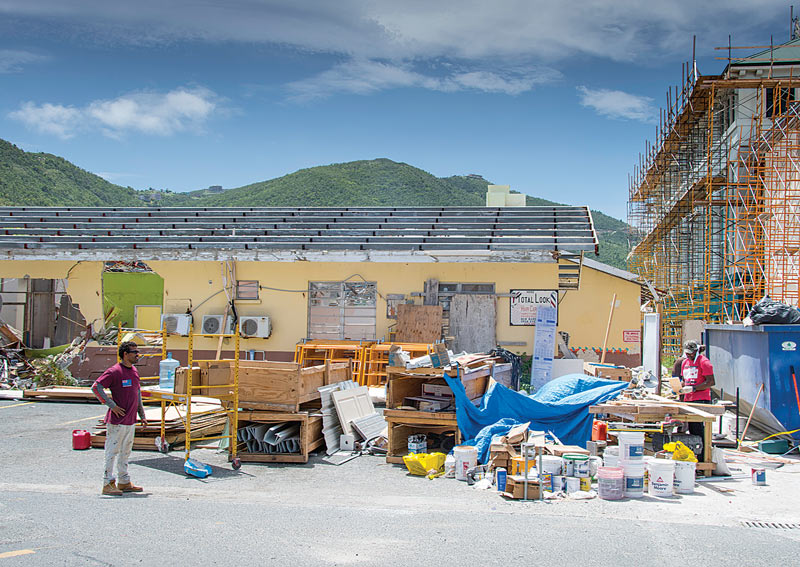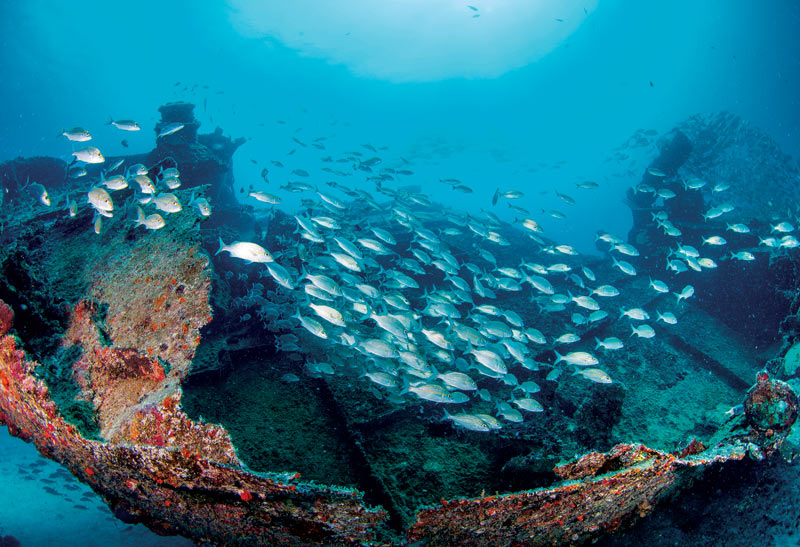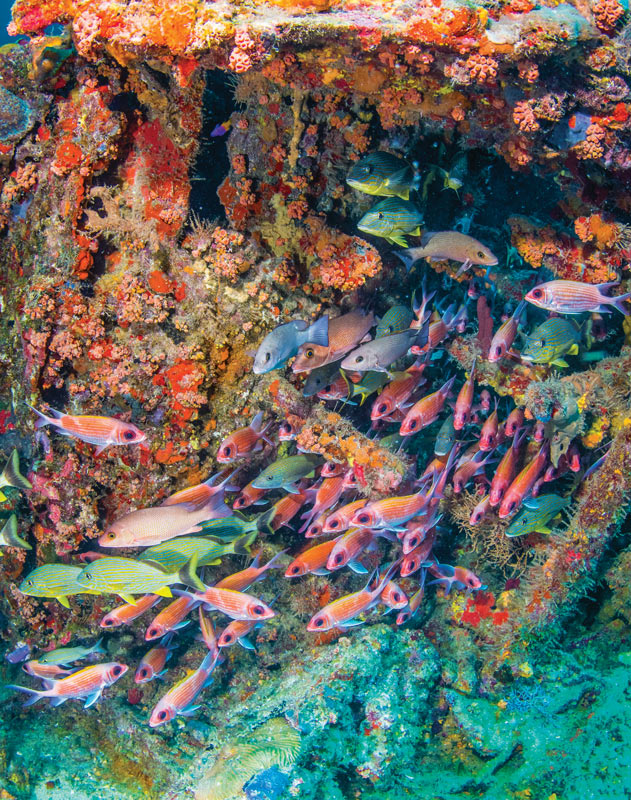TRUE STORY. Caribbean-style singer-songwriter Jimmy Buffet got the inspiration for his iconic song, “Cheeseburger in Paradise” while cruising the British Virgin Islands (BVI) by sailboat. It was the summer of 1978 when rough seas delayed their arrival into Tortola’s Road Town harbor. Buffet and his crew ran short of supplies and were left rationing a jar of peanut butter for the last few days at sea. They finally pulled into Village Cay Marina days later, half-starved. Buffet and his motley crew headed straight for the bar and grill and ordered big fat cheeseburgers. The burger sparked a fire in Buffet’s hungry belly. The rest, as they say, is history. Buffet made a fortune off “Cheeseburger in Paradise” — it’s the first track on his greatest hits album — and is also the name of his popular restaurant franchise.
That’s the irony of adversity. When hardship brings us to our knees, we often rise again stronger than before. British Virgin Islanders know this is true. Just a year ago, on September 6, 2017, Hurricane Irma made landfall as the strongest Atlantic hurricane ever recorded. Over 85 percent of the BVI’s properties sustained catastrophic damage, with recovery costs estimated in the billions. Yet despite such unprecedented, widespread damage, British Virgin Islanders developed strong backs and stiff upper lips. They put an influx of financial aid and other assistance to good use, quickly rebuilding their island paradise. It reminded me of the slogan from the motivational poster produced by the British government in 1939 in preparation for Word War II that enjoyed a comeback recently. It read, “Keep Calm and Carry On.”
Carrying On
A year later, recovery is evident everywhere you look. Hillsides once denuded of growth are green again and hibiscus hedges are flowering. Algal growth that is choking reefs in other parts of the Caribbean was scoured from local reefs, which are showing new growth and remain teeming with colorful fish life.
As nature does its thing, so do island residents and tourism industry stakeholders. The first priority was to reopen resorts and tourist areas, many of which are now ready to receive guests. Those resorts that have reopened have done a remarkable job. You’ll find clean accommodations with brand-new everything. You’ll also see storm debris awaiting removal, but “soon come” as they say in the islands. Stores are well stocked and beachfront restaurants are turning out “cheeseburgers in paradise” the same as they ever were. When you’re out diving, sailing or enjoying the view from one of the BVI’s beautiful beaches, you’ll feel the calm. And you’ll fully appreciate the carrying on.

A daysail charter to The Baths at Virgin Gorda is a great way to enjoy cruising BVI waters. Photo by Lois Hatcher.
Stellar Support
Government agencies, international aid organizations, neighboring islanders who offered grassroots assistance and locals who lifted their own selves out of the rubble have joined forces to aid in the BVI’s recovery. All deserve respect and thanks. That said, two notable celebrities with ties to the islands deserve a special shout-out for their star-powered support: they are businessman Sir Richard Branson and recording artist Kenney Chesney, both of whom have strong ties to the islands.
Branson rode out the hurricane in a wine cellar along with staff and guests at his private Necker Island resort, which sustained massive damage. He was instrumental in getting early shipments of water, food and emergency supplies delivered and his nonprofit, Unite BVI, has provided much-needed financial aid.
Kenny Chesney’s Virgin Islands Hurricane Relief Project topped 77,300 in album sales during its first week on the charts in early August. This is good news for the BVI, as all the proceeds from Chesney’s “Songs for Saints” support the U.S. and British Islands’ hurricane relief. “This album means the world to me, because of what it’s about and what it means to the people of the Virgin Islands,” Chesney says. “I hope these songs, which really celebrate the spirit of the people, will keep inspiring us all no matter what we’re facing.” A recent review in Rolling Stone says Chesney’s album, “maps a cycle of grief and despair transformed into healing and resilience.”

A lot of progress has been made in the BVI in a short time, with more reconstruction still to come. Photo by Lois Hatcher.
Background on the BVI
The British Virgin Islands are a self-governing territory of the United Kingdom. English is the official language, although it’s spoken with delicious blends of British and Caribbean dialects.
The BVI is made up of over 50 islands, islets and cays spread out over 59 square miles (153 km2 ) of blue. With the exception of Anegada, which is a coral atoll, the islands are volcanic in origin. Some are large rocky peaks, while others are small spits of sand. The way the islands are distributed makes them an ideal cruising ground for boaters. Many feature protected bays and hidden coves that seem purpose-built for water sports enthusiasts. Island hopping is easy. In fact, some islands are less than a few miles apart: they’re close enough to explore by kayak or stand-up paddle (SUP) board.
Because the British Virgins are recognized as one of the best boating and diving destinations on the planet, the government, through the BVI National Parks Trust, put measures in place to protect the seafloor and its coral reefs, including installing over 200 moorings. This was done way back in 1991, when the concepts of eco-tourism were still in their dawning days. Anchoring is not permitted in designated mooring areas and some areas are reserved exclusively for divers.
Tortola, Virgin Gorda, Jost Van Dyke and Anegada make up the largest islands, with Tortola being the largest, busiest and most populated. Road Town is Tortola’s hub. It’s also the capital. No doubt you’ll travel to and from Road Town as you explore the BVI.
Across the Sir Francis Drake Channel eight miles (13 km) east of Tortola is Virgin Gorda — the “fat island,” — which got its name because famous island-namer Chris Columbus thought its profile on the horizon resembled an overweight woman lying on her side. Virgin Gorda ranks number three in size (after Anegada) but second in terms of population and attractions for tourists. A mountain ridge dissects Virgin Gorda into distinct north/south halves. North Sound is one of the world’s most beautiful protected bays, bordered by four islands and a string of connecting reefs. Spanning over 3,000 acres (1,200 ha) this area features moorings that have tethered the most prestigious mega-yachts in the world. (Sadly, the iconic Bitter End Yacht Club sustained heavy damage in the hurricane and remains closed during reconstruction.) The main commercial and residential area is on the south side, at Spanish Town. The south side is also where the unusual geologic formation known as The Baths is located. A must-visit attraction, it features huge boulders scattered across a sugary sand beach. The boulders are stacked in such a way that they form a series of small grottoes and pools. You have to see this place in order to fully appreciate its natural beauty. Once you’ve visited, you’ll understand why it’s protected as part of the BVI National Trust.
Five miles (8 km) northwest of Tortola is Jost Van Dyke, the “Barefoot Island.” With fewer than 300 residents, life is simple and relaxed. Jost Van Dyke is especially popular with sailing charters, who make stops at Giant Harbor and Little Harbor.
Anegada is the odd duck, a coral atoll amongst its volcanic, mountainous sister islands. Anegada is an 11-mile-long (18 km) flat coral and limestone atoll. The highest point is only 26 feet (8 m), making it almost invisible on the horizon. The island is framed by more than 24 miles (38 km) of deserted beaches: beneath the water’s surface, the extensive Horseshoe Reef surrounds the atoll. Anegada is 20 miles (32 km) northeast of Tortola and 15 miles (24 km) north of Virgin Gorda, making it remote and sparsely populated.
Much of Anegada is reserved for birds and other wildlife by the BVI National Parks Trust (NPT). An established flamingo colony now includes the rare roseate flamingo. It’s also home to the endangered Anegada rock iguana.
There are numerous other islands to explore and many are uninhabited. Some only have a hotel or beach bar, but virtually all have exceptionally beautiful beaches that are open to the public and accessible by ferry, charter or private boats.

The British Virgin Islands offer several interesting shipwrecks for divers to explore. Photo by Lois Hatcher.
Below the BVI
The warm, clear Caribbean waters are one of the main attractions in the BVI. Because the islands are volcanic in origin, divers will discover fascinating formations, such as caves, tunnels and overhangs, all of which create an exceptional habitat for the flora and fauna. Most dives are 60 to 90 feet (18 to 27 m), with the deepest about 100 feet (30 m). Water temperatures range in the high-70s Fahrenheit (25-26 degrees Celsius) to low-80s F (27-28 C). A tropical wet suit is recommended. There are no large walls and currents are virtually nonexistent, making the dives enjoyable for divers of all experience levels. Most of the dive sites are accessible by boat. Of the 100 dive sites, the majority are moored and maintained by the National Parks Trust and the Ministry of National Reserves to preserve the reef and marine life.
Most diving is done by boat. Local operators typically offer a two-tank morning excursion and a one-tank afternoon trip. Dive centers offer a full range of scuba courses, from introductory classes to advanced and specialty courses. Nitrox is readily available and some dive centers also have underwater camera and video rentals available.
There are several different ways to enjoy the diving, including “day” dives that depart from and return to the dock after each diving excursion; live-aboard diving on dedicated dive charter boats such as the Cuan Law trimaran, or “rendezvous” diving from private yachts. For a rendezvous dive, divers staying on private yachts may arrange to have a local dive boat pick them up for a dive trip and return them to their boat when finished.
These islands are truly a wreck diver’s paradise. Perhaps the most anticipated dive is on the iconic wreck of the RMS Rhone. Measuring 310 feet (94 m) long and 40 feet (12 m) wide, the Rhone was built in England in 1865 and sank in 1867 near Salt Island during a fierce storm. The wreckage is broken into two distinctly different sections. Covered with colorful encrusting marine life and several healthy black coral trees, turtles, parrotfish, angelfish and lobsters are commonly seen on the wreck. Once featured in the 1977 classic film, “The Deep,” the Rhone was the island’s first marine park.
The Wreck of the Chikuzen on Virgin Gorda remains one of the fishiest dives ever. I could have easily spent an entire week there, photographing the massive schools of snappers, grunts and even Goliath Grouper.
In terms of wrecks, the new kid on the block is the “Coral Kraken,” a/k/a the Kodiak Queen. Another philanthropic effort spearheaded by Sir Richard Branson, the boat was at Pearl Harbor during the “date which will live in infamy” in 1941. That’s reason enough to want to explore it, but wait, there’s more. In true Sir Richard-style, the wreck is also a hybrid art installation featuring an 80-foot (24.5 m) metal sculpture of a kraken, a mythical octopus-like sea creature said to inhabit the cold deep waters off Norway. Sunk in 2017, it got tossed a bit by the hurricane, which helps make it even more wreck-like.
Other enjoyable wreck dives are the Coral Gardens off Great Dog Island, containing the remains of a Shorts 360 airplane and Wreck Alley near Cooper Island, where three wrecks were sunk in one location.
The BVI are bordered on the west by the Caribbean and the east by the Atlantic. As a result, large pelagics such as tuna, dolphin and blue marlin often swim in the channels. During winter months visitors have a chance of encountering migrating humpbacks, sperm and grey whales.

The famous RMS Rhone teems with colorful fishlife. Photo by Lois Hatcher.
BVI Bound
The BVI has a range of accommodations from quaint guesthouses, to small boutique hotels and private villas, to high-end luxury resorts. And then there are the floating options, from do-it-yourself “bareboat” yacht rentals to crewed private charters to dedicated diving liveaboards. There’s a vacation option — and an island — for everyone.
However, you won’t find the beaches lined with high-rise condos and there are no high-stakes casinos, either. And if there’s a traffic jam on Tortola, it’s likely being caused by an obstinate donkey blocking one lane of traffic.
Keep in mind that the recovery effort is a work in progress, with some resorts still shuttered while others are eager to greet clients. When planning your BVI visit, refer to the official BVI Tourism Bureau website, bvitourism.com, and bvitraveller.com for updated information on the status of hotels, restaurants, dive centers and other local businesses.
There are no direct flights into the BVI from the USA or Canada. The most direct way to arrive by air from North America is via San Juan, Puerto Rico. Or you can fly into to the neighboring U.S. Virgin Island of Saint Thomas and book a fast ferry or island-hopper flight. Your travel specialist can assist with reservations and connections.
The BVI’s beaches are still beautiful and the diving continues to delight. Classic Jimmy Buffet (and chart-topping Kenney Chesney) tunes are playing and there’s a cheeseburger waiting for you at a beachfront bar and grill. Yes, paradise took a hard blow, but these islands are getting their groove on again. Go sink your toes in the sand and enjoy them for yourself.





